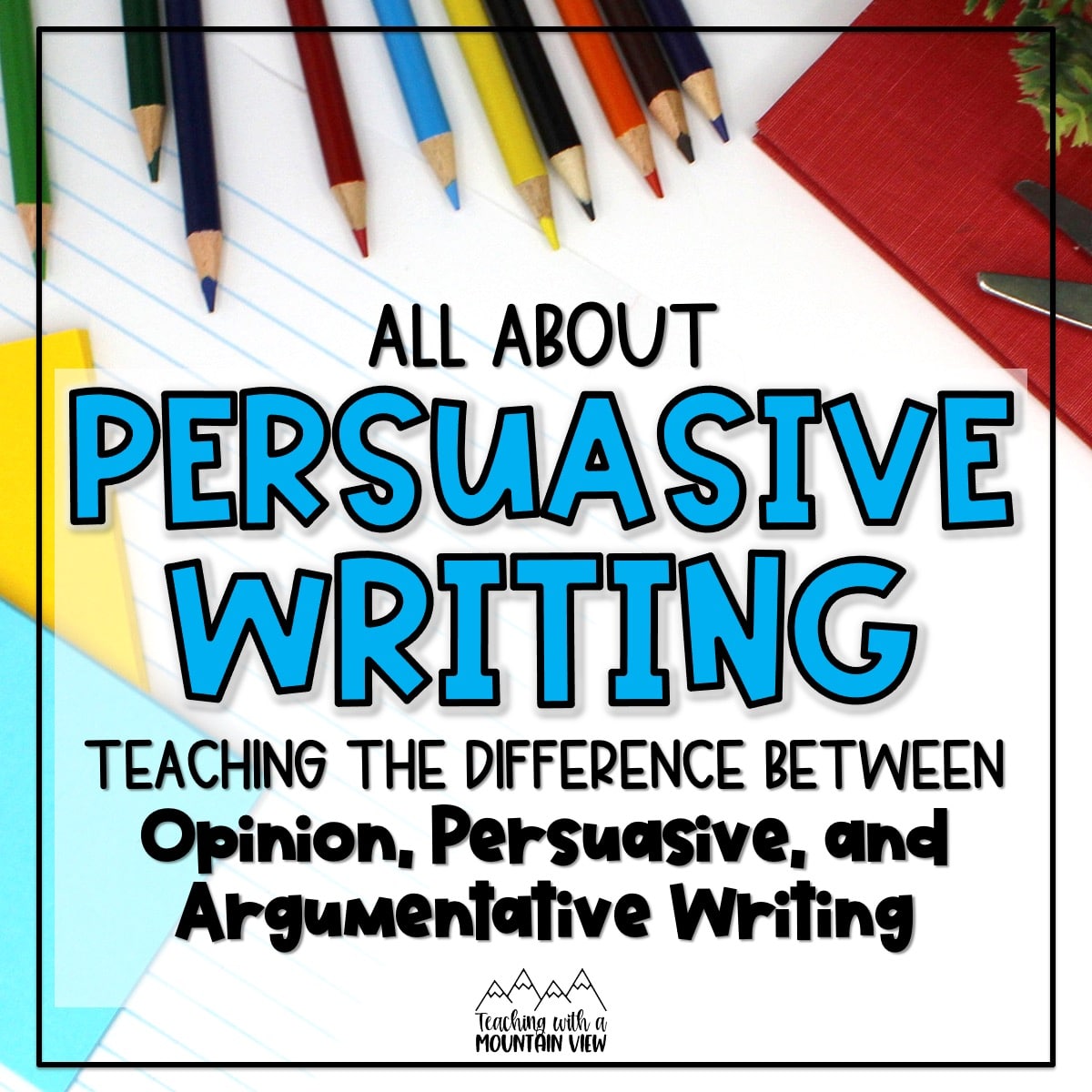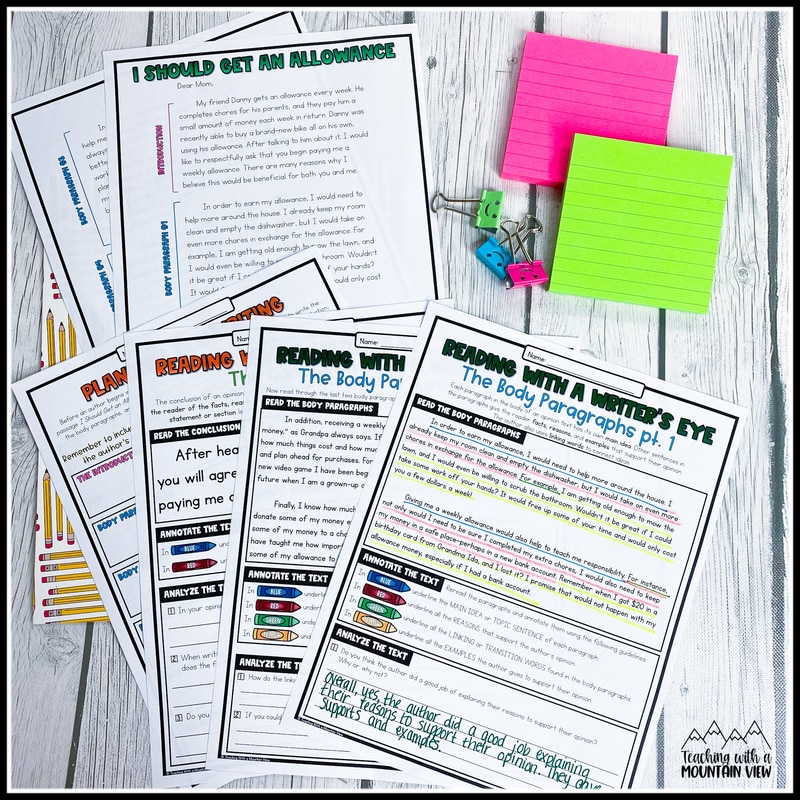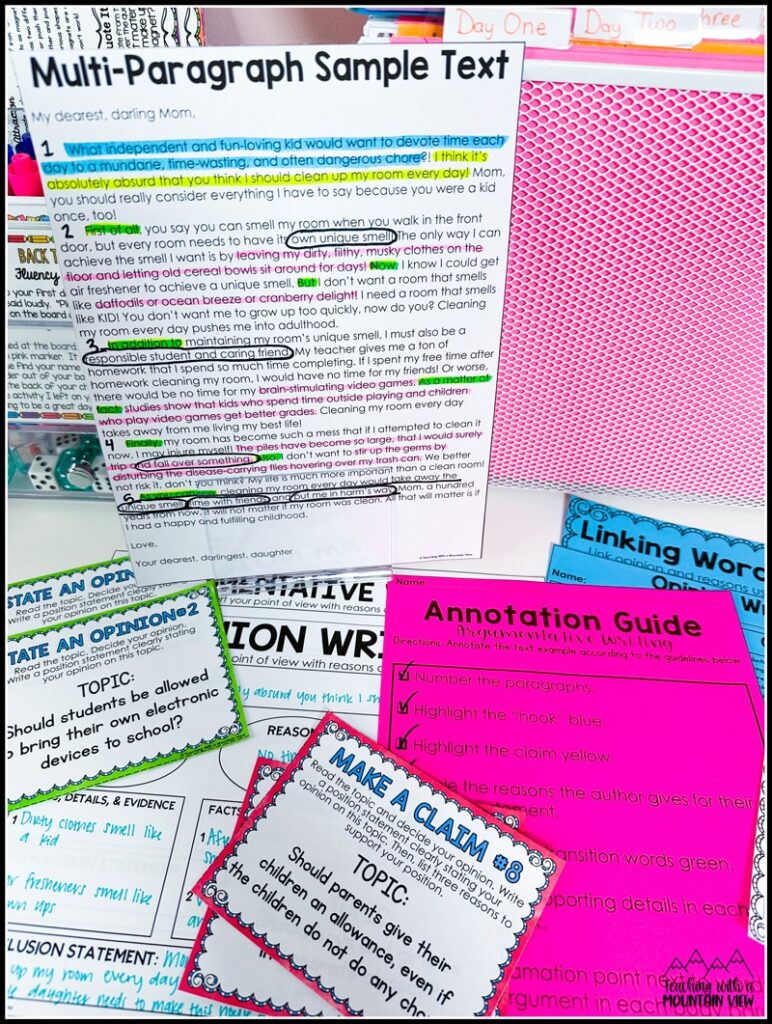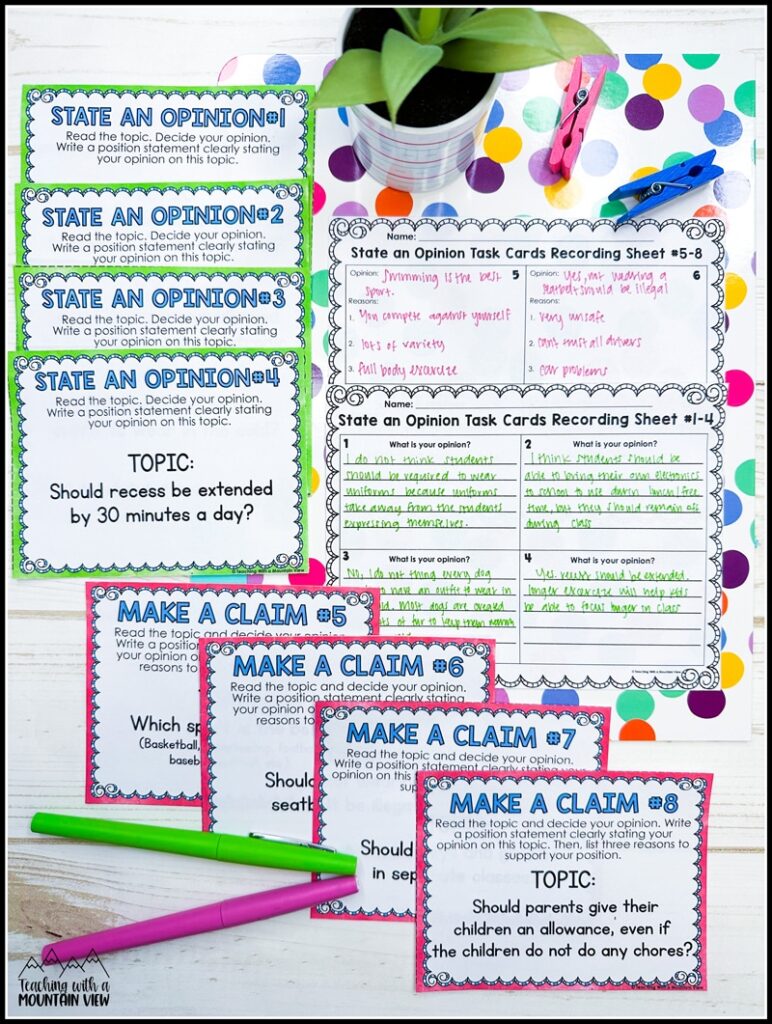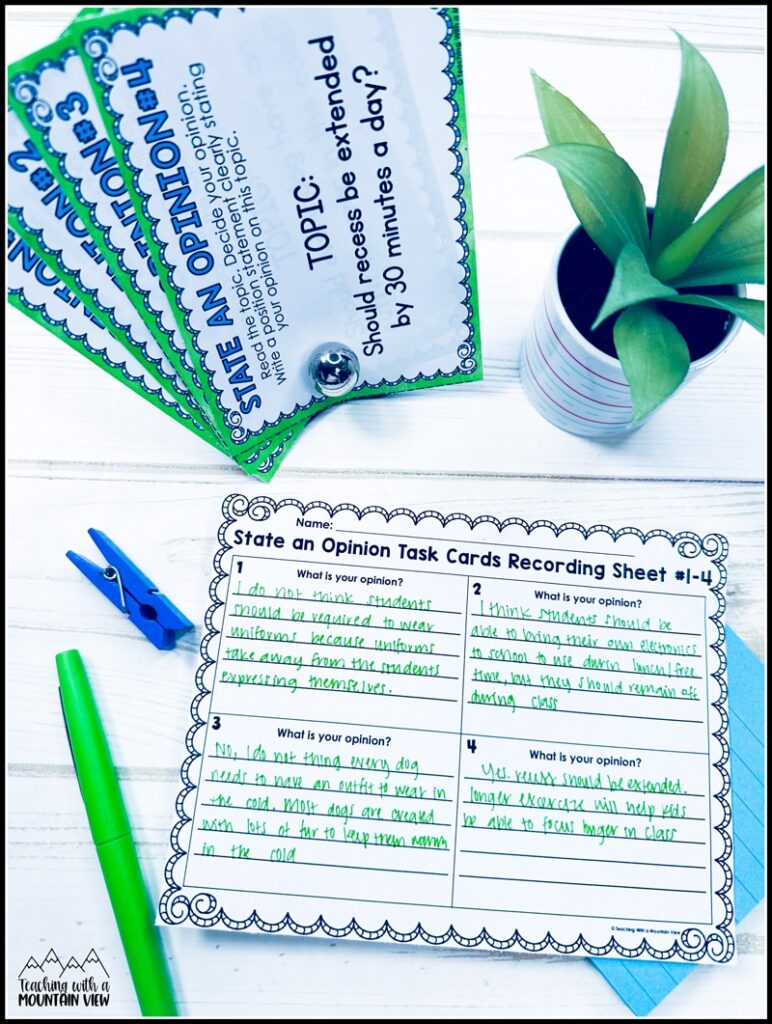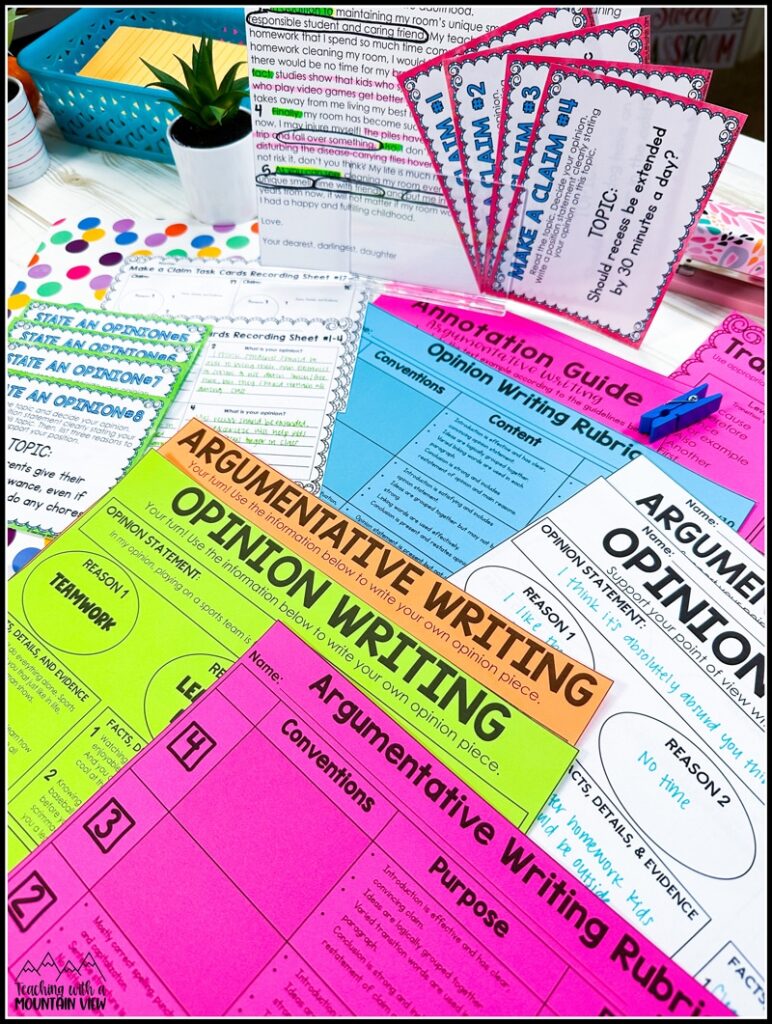Kids are natural persuaders. In our classroom, we often engage in silly debates (is water wet?) and sometimes my students voice their opinion about things going on at school (this lunch is gross!). Every elementary student has a special talent for persuasive writing just waiting to be cultivated.
Jokes aside, persuasive writing is one of my favorite units because students truly are passionate about the world around them. Especially in upper elementary, they are beginning to form their own opinions about the world. My job as a teacher is to help them mold clear arguments.
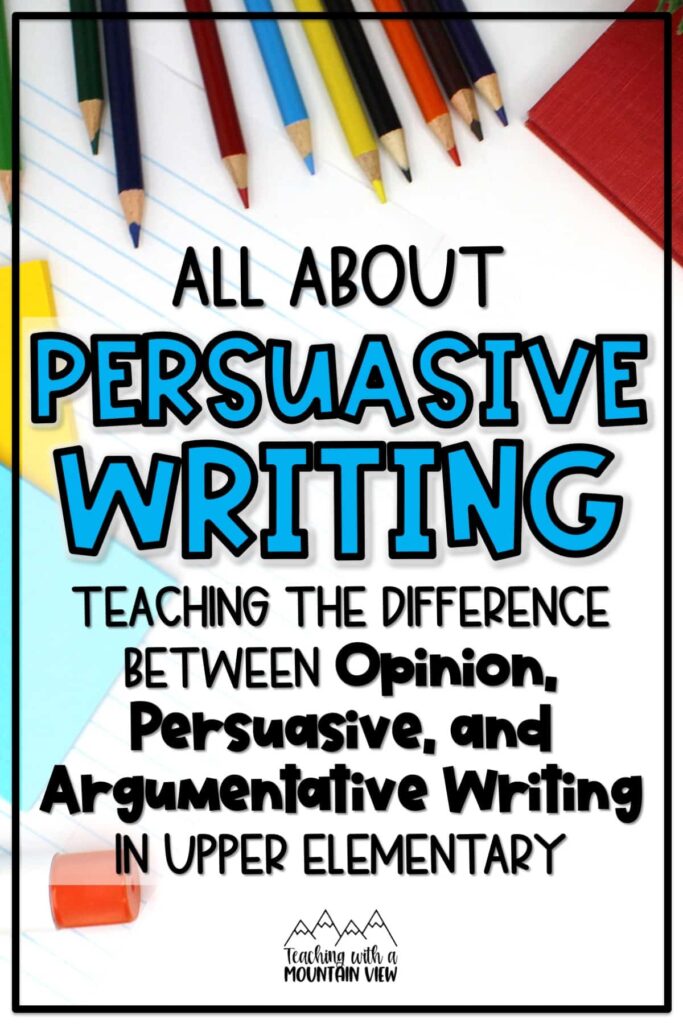
Opinion, Persuasive, and Argumentative Writing
When we talk about persuasive writing, we often hear many different key words. Opinion. Persuasive. Argumentative. Are these all related? What is the difference between them? Here is a breakdown of the differences between Opinion, Persuasive, and Argumentative writing.
Opinion Writing is when the writer shares their opinion and explains why they think that way. They do not necessarily try to persuade others and get them to consider other viewpoints but will share their opinion freely.
Persuasive writing is when the writer is actively trying to convince the reader to see their view or opinion as the correct one. While persuasive writing may use facts and data, it also uses opinions and personal experiences to prove a point. This is why you will often see persuasive and opinion often talked about together or interchangeably. In persuasive writing, the author is appealing to ethos (credibility) and pathos (emotion).
When we ask our students to write persuasive texts, we want to make sure they are using language that displays their opinions and thoughts. And their reasons should come back to personal experiences, opinions, and their own rationality.
Argumentative writing is the most formal of the three. Argumentative pieces feature a writer who wants you to consider their view as valid and to take it into consideration. In argumentative writing, there is very little opinion writing involved. It is based only on research, facts, and data. It also acknowledges counter arguments. In argumentative writing, the writer is appealing to logos (logic).
When we ask our students to write argumentative texts, we ask them to take a stance on a topic. However, they should focus heavily on researched facts and information.
I love this argumentative standard chart from Smenkens Education as an all in one reference!
How to Teach Persuasive Writing
Teaching persuasive writing can be so engaging for both you AND the students!
Hook: I give my students the six short articles. I ask them to find similarities and differences between them, and then we sort them into piles based on opinion writing, persuasive writing, and argumentative writing. We analyze the different components of each one, and this becomes our HOOK and enables them to visually see the different examples.
We create the argumentative chart with the differences between opinion, persuasive, and argumentative writing, and I explain that we are going to focus on persuasive writing for now.
Persuasive Writing Key Terms and Mentor Texts: Now that my students know what persuasive writing is, I start by introducing them to persuasive texts and key terms. I like to use a mentor text for this. This can be a persuasive text from a former student, your own writing, or a passage from online. These opinion text exemplars and this opinion writing unit both have mentor texts included.
Here’s a look at the opinion text exemplars.
Here’s a look at the sample text from the opinion writing unit.
As you look at the text, read over it with your students. Then, begin to connect the mentor text with key vocabulary terms. I like to do this by giving my students the graphic organizer they will use when writing.
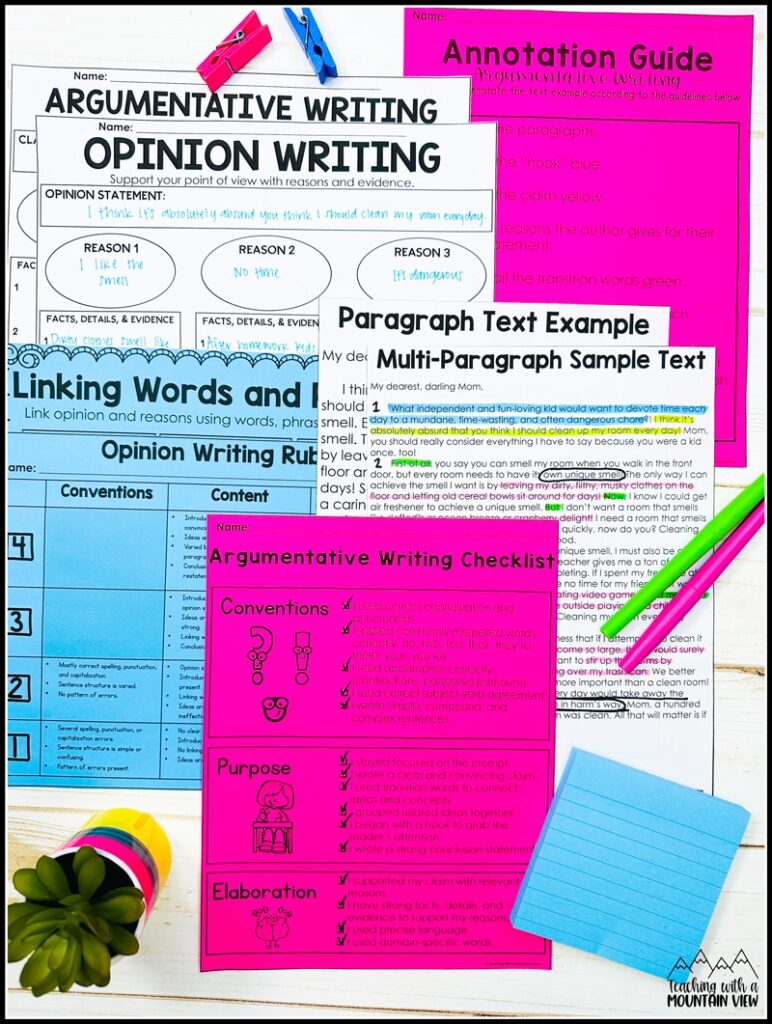
I give my students time to comb through the mentor text again and write down elements from the text into the graphic organizer… we call this backwards writing, where we are actually looking at the finished product first and going back and recreating the plan based on the final writing.
My organizer contains key vocabulary such as
- Claim
- Reason
- Facts
- Details
- Evidence
My goal for this exercise is for my students to be able to identify the big claim of the essay and the reasons they give.
The Persuasive Writing Process
Now that my students are familiar with the basic structure and vocabulary of persuasive writing, we begin the actual writing process. I love using daily mini-lessons to walk students through all the steps of the process. When we do the mini-lessons, I use short task card prompts to encourage students to work through small parts of the process without actually writing a full paper.
I teach students about breaking down the prompt to make sure they’re addressing what’s being asked. Then we focus on creating and supporting a claim. Eventually, we go through the persuasive writing process step-by-step, and students have a chance to work as a class, in small groups, and independently on their writing as they practice the different elements.
After students have a solid grasp on the different parts of persuasive writing, I guide them through the writing process: we focus on choosing a topic, brainstorming ideas, constructing our arguments, planning (using the graphic organizer), writing, editing, and revising. During the mini-lessons, we end up writing an essay together, and I do a lot of modeling through the process. Then, during independent practice and small group work, students are drafting their own personal essays using the skill or element we learned that day.
Persuasive Writing Topics
Here are a few persuasive writing topics that you can use for your whole class essays or for student essays:
- Should kids have the same rights as adults?
- Should students be allowed to eat snacks in class?
- Should kids be allowed on social media?
- Should students have detention if they are late to school?
- Should we eat dessert with every meal?
Celebrating Writing
One key part of writing in our class is celebrating. Let’s be honest, writing takes a lot of work! I like to make sure students have a chance to share their writing with the class and celebrate each other. Here are a few ways you can share writing at the end of your persuasive writing unit:
- Quiet Reading – During quiet reading, you can play some soft background music and have students pass around their essays. Students should not talk during this time. Instead, they will write a note on a Post-It for the writer and put it on their essay.
- Read Aloud – Have a couple spare minutes in class? Want to change up morning meeting? Have students share their essays out loud. Reading a whole essay will take a while. Instead, have students choose a paragraph or a few sentences they are most proud of. Encourage plenty of applause after someone shares!
- Partner Share – After finishing a writing unit, have students turn to their partner. You can have them read their whole essay or just a portion to their partner. Set the expectation that the partner will give some specific feedback, such saying, “That was great! I really liked the way you _____________.”
- Make an Impact – Of course, sharing doesn’t have to stay in your classroom. If your students wrote compelling opinions about something in their school, community, state, or beyond – you can share / mail those letters!
Persuasive Writing Unit
If you are feeling lost with persuasive writing or need a done-for-you persuasive writing unit, this Persuasive Writing Unit includes mentor texts, graphic organizers, persuasive writing prompts, and much more to provide your students with a comprehensive unit.
Students will use samples and checklists to gather a full understanding of opinion writing before moving on to a variety of activities and ways to create their own pieces of persuasive writing. It also includes TWO versions. One version refers to this technique as “opinion writing” and the other uses the term “argumentative writing.” You choose the version that aligns best for your needs.
There are many different levels of graphic organizers and writing templates. so you can choose the level that is right for your class whether you want your students to write a single paragraph or multi-paragraph essays!
More Writing Tips
I have other blog posts about narrative writing and descriptive writing. If you want to learn more about the other writing styles, check out those too!
Mary Montero
I’m so glad you are here. I’m a current gifted and talented teacher in a small town in Colorado, and I’ve been in education since 2009. My passion (other than my family and cookies) is for making teachers’ lives easier and classrooms more engaging.







